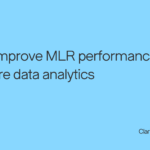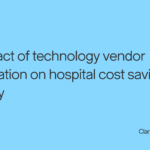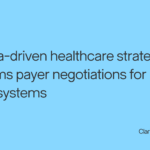Interview with Sapna Prasad, PhD, Senior Director and leader of the Clarify Insights team It is widely recognized that racial and ethnic disparities impact the rate of adult immunization for vaccines like pneumococcal, hepatitis A, hepatitis B, influenza, and human papillomavirus (HPV) vaccines. The CDC reports that lower vaccination rates persist among racial minorities, and among those who lack health insurance, have lower incomes, or less education. Disparities in vaccination status are also more prominent for older adults. To address these inequalities, Clarify Health has prioritized the inclusion of social and behavioral determinants of health (SDoH) data in its understanding of the patient journey as a critical component to identify disparities and monitor them over time. This is a step that needs to be taken to develop evidence-based interventions that can mitigate this gap. We stand at the forefront of delivering real-world evidence (RWE) on the impact of health disparities on patient outcomes to help our customers improve the care and outcomes for the most vulnerable patients in our communities. Last week, we met with Sapna Prasad, PhD, Senior Director and leader of the Clarify Insights team for an interview about her team’s research on the impact of socio-behavioral determinants of health on vaccine uptake across different segments of the population. One of our large pharma customers approached us because they wanted to understand trends in uptake for pneumococcal vaccines, particularly in the population over 65 years old. Most importantly, they wanted to understand the racial and socioeconomic disparities that influenced access to vaccination, with the ultimate goal of understanding how factors beyond medical interactions captured in claims and clinical data could impact a person’s health. As individuals advance in age, certain health disparities tend to be seen on a larger scale and with greater acuity. We know, for example, that many do not have access to the same type of coverage and services that they might have had when they were younger and employed. This pharma company wanted to provide new insights to the Centers for Disease Control (CDC) as part of their regular discussions about vaccination rates in the US. As background, it’s important to note that the CDC had changed their recommendations for who should get the pneumococcal vaccine among older adults. The vaccine used to be required across the board for individuals aged 65 and over. When the CDC recommendation changed to include children, the threat of transmission from children to adults was thought to be lower due to increased and persistent vaccination in kids. The recommendation for older adults was changed to shared decision-making. This means that a person over the age of 65 would have to have a conversation with their doctor about whether or not they should get the vaccine. The pharma company felt strongly that this decision would disproportionately impact older adults who are racial minorities or from households with lower socioeconomic status because they are less likely to have regular interactions or continuity in visits with their healthcare providers. We were expecting to see rates of vaccination go down across the board for all age categories, all socioeconomic groups, and all racial groups with the pandemic. That is, in fact, what we saw in the analyses. What was interesting to note, however, was that when preventive vaccinations started to pick up again, some racial or socioeconomic groups did not start going back to get vaccinated at the same rate. This could be for several reasons, such as employment status, COVID-19-related vaccine hesitancy, or an unwillingness to interact with the medical system during the pandemic. Our research discovered that the gap in vaccination rates between the different socioeconomic and racial groups was slightly wider than they were pre-pandemic. The SVI was created with the goal to help emergency response planners and public health officials identify and map communities that will most likely need support before, during, and after a hazardous event. It essentially takes 15 social factors, including poverty, lack of vehicle access, and crowded housing, and groups them into four related themes. It is a widely validated and accepted measure in the academic and medical fields. The index also encompasses all of the neighborhood factors for an individual that may be relevant to look at. Clarify holds de-identified, patient-level geographic information, so we could really dig down to the patient level. People are starting to get vaccinated. For those who are younger, are Medicare eligible (not dual eligible), or are white non-Hispanic, the curves are pretty much back at pre-pandemic levels, or in some cases even slightly above pre-pandemic levels. However, other racial minority groups and the lower socioeconomic status groups are still slightly below the pre-pandemic level. We know that these are the groups that are less likely to interact with the healthcare system proactively, whether pre- or post-pandemic, so the CDC recommendation for shared decision-making for the pneumococcal vaccine may contribute to widening the gap. The customer’s Patient/Health Impact Health Economics and Outcomes Research (HEOR) Vaccines team plans to share this information with the Advisory Committee on Immunization Practices (ACIP) of the CDC. They really want to use this information to be action oriented. These critical insights will help the customer gain access to resources to focus on the more vulnerable groups to ensure they have the education, support, and access they need to be protected against pneumococcal disease. The research findings are helping inform the real-world impact of the decisions of the CDC on the population and help understand potential longer-term ramifications of such as a resurgence of pneumococcal disease amongst the elderly. Yes, we are digging a bit deeper into the at-risk and high-risk populations – subgroups with a specific type of disease who are driving the curve. This work has also spurred a second project focusing on understanding the impact of non-medical health factors on vaccination uptake in the Medicare population and understanding maternal vaccine uptake in the Medicaid population. To learn more about real-life applications of insights into health disparities, read our white paper: Next-gen applications of SDoH. Or, visit us at clarifyhealth.com.How is your team’s work helping pharma address health disparities?
What specific research do you help them conduct for review with the CDC?
While the CDC guidelines could reduce the likelihood of older adults receiving the pneumococcal vaccine, has the COVID-19 pandemic exacerbated the situation?
Tell us about your approach. How did you use the Social Vulnerability Index (SVI) to measure population vulnerability?
As we start to emerge from the worst part of the COVID-19 pandemic, is the gap in vaccination rates closing across different groups of the population for non-COVID-19 vaccines?
What is the customer hoping to achieve with the insights emerging from the research?
Have new questions emerged since this first phase of research work?
- Author Details





